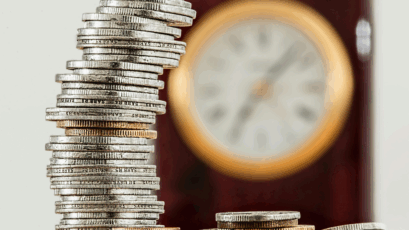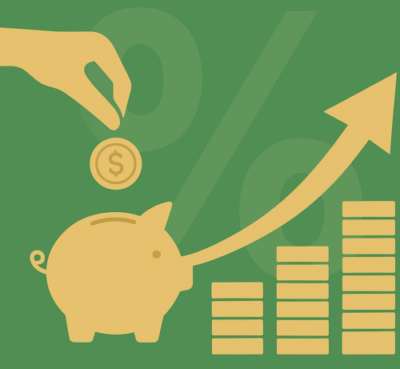“If you don’t have international shares you are missing out on 98% of the world’s equity opportunities!”
So goes the catchcry of international share fund managers.
Popular media often scolds trustees of SMSF’s for being too domestically focused and missing out on the opportunities that are available in international shares.
And to help the do it yourself market to access international shares there are now a preponderance of Exchange Traded Funds (ETF’s) and Listed Investment Companies (LIC’s) that make it easy for individual investors and SMSF’s to access international exposure through their online trading accounts.
Performances over the twelve months to 30 June 2015 certainly make DIY investors sit up and take notice of the argument why you shouldn’t ignore international share markets.
The MSCI World Index priced in Australian dollars returned 25.18% for the year to 30 June. The three year performance is 26.12%. For comparison, the Australian ASX200 Accumulation index returned 5.68% for the year, and 15.06% p.a. for three years.
Just looking at those numbers should make anyone appreciate the benefits of diversifying into international shares. Indeed, within our own model portfolios, the return on our ‘worst’ international share fund last year was 17.42% and the best was 44.34%.
However, you will be well served to remember the frequently printed but often ignored disclaimer, ‘past returns are no indication of future results’.
Currency Impact
One of the key reasons that international shares reduce overall portfolio volatility for Australian investors is the currency effect.
The Australian dollar is seen as a commodity currency. As such, its movements are highly correlated to the perception of how the global economy is faring. When markets enter a ‘risk-off’ phase, where large pools of money are exiting risk and looking for security, the Australian dollar is typically falling.
The effect of that is for the value of international assets to rise when measured in Australian dollar terms. In practice it may mean that international share markets are falling too, but if our currency is falling further, then there is still a positive performance.
Imagine for a moment that International shares fall by 20%. At the same time the Australian dollar falls by 30%. All other things being equal, your international investments would show a return of 14.28% when priced in Australian dollars. (100-20%) / (100-30%) = 14.28%
Not bad in the circumstances.
Let’s consider the real-time impact on international shares performance for Australian investors.
Last year on 30 June, the AUD currency was at $0.9431. On June 30 2015 it was at $0.7704. That is an 18.31% loss in value (purchasing power). But it is also a 22.4% gain from the perspective of an Australian dollar investor who simply held US dollars through that period. (Sorry if you have trouble making sense of that – it’s because gain and loss performances are not asymmetric).
The USD example is a bit simplistic because not all international shareholdings are going to be priced in USD. For comparison the AUD started last financial year at 0.6887 Euro, and finished at 0.6914 Euro which translates to a loss of 0.39% in AUD terms. So the European share component of an international fund would have gained nothing on the currency.
Understanding the impact of the currency on international shares is an important part of the puzzle.
It also gets us to the point where we ask ourselves, what is my view of the Australian dollar value in the long term? In other words, do I take the view that the Australian dollar is going through a normal cyclical move, or do I believe it is in a long term secular decline.
An example of a country in secular decline is Zimbabwe. The government there has continuously debased the currency and embraced wealth destroying populist policies. Another example is Greece, arguably in decline since Alexander the Great died after contracting an STD. Greece is holding onto the Euro as its hope, but it is an example of a country in secular decline.
That is the big question for Australian’s deciding on international investments. Are we in a secular or cyclical decline?

The AUD chart above illustrates how long the cycles in the AUD can be. A six or seven year trend can really start to feel like a secular decline. However, as long as we remain adaptable in this country and have the political will to avoid becoming a welfare state, then it is more likely that we are just in the middle of a cyclical decline.
How much lower will the AUD go, and how much tailwind will that continue to provide to buyers of international assets? Great question. The fact is that no-one knows for sure.
NAB Global Currency Strategy group has a June 2016 target of $0.71 and gradually rising thereafter to $0.75 by June 2017. Charlie Aitken is adamant that we will see $0.68 before the tide turns. It would not be unthinkable that we could get to $0.60 which would be great for local tourism and our winegrowers.
What the currency chart should illustrate though is that we have already had a good portion of the gains from the falling currency. That won’t continue forever, and if you take a look at the period from the March 2009 GFC lows to the AUD peak in July 2011, you get an idea of the pain that unhedged international share investors have had to suffer at times.
Diversification
Another reason for international investing is diversification. This is probably the most valid reason, and one that is fairly easy to grasp. While we have world class banks and miners here in Australia, there are many other industries that are seriously under-represented. Technology is one of them. Companies like Apple, Google, Microsoft and Oracle just don’t exist in Australia.
Even in the field of plain vanilla industrial companies one that springs to mind is Cummins Engine. The company has maintained or increased its dividend for 25 years. It has grown earnings per share at 14% per annum over the last 10 years. It is the world’s largest manufacturer of diesel engines. And yet with all this it trades on a price earnings multiple of only 13.4 and has a handy dividend yield of 3.1%.
Switzerland has world class chocolate companies, UK has one of the largest liquor brand owners in the world. Our medical device manufacturers Resmed and Cochlear are world class and trade on P/E to reflect that, but there are a world of others like Gilead Sciences trading on a 12.2 times multiple.
The point is that industry diversification is a very good reason to have international stocks in a portfolio.
However, one needs to be selective, and not simply buy the whole market.
A trap for the unwary
Accepting the argument that International exposure is a good thing, the next question is how? It is getting easier as mentioned at the outset to buy an ETF or LIC that gives you the international exposure. Buying one of those is likely to just get you an index exposure and it remains to be seen if that will be enough to carry you through the inevitable period when the investment is not performing.
For an investor who goes out and buys an ETF just because that’s what they experts recommend, and because they did 26% last year there is a risk that they don’t get the right ‘connection’ with and belief in the underlying assets they are buying. With that comes the risk that in the next downturn they are more likely to sell out at the worst possible time.
At Quill we get passionate about the rationale for buying. We ask what is in the international portfolio? Are they businesses we understand? Does the manager have a demonstrated track record of adding value? What is the currency hedging position? Is our view that the AUD is going to fall further, or do we start to hedge the currency exposure. Is the whole market ‘cheap’ enough that we can buy an index fund without too much risk? (Hint – we don’t think so at the moment).
International Solutions?
It is a complex thing to construct a well-diversified portfolio. Get advice. Sometimes the best investments are not always the easiest to access. Small managers often (not always) have a performance edge. Don’t be afraid to pay a little extra in fees for a manager who has a record of outperformance. And most of all, don’t expect past performance to be indicative of future returns.













